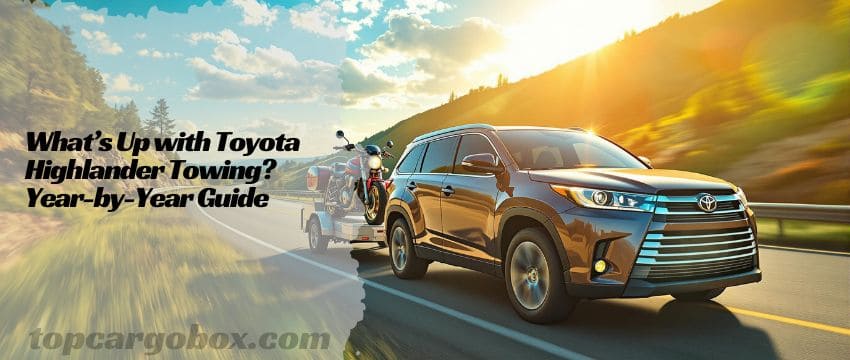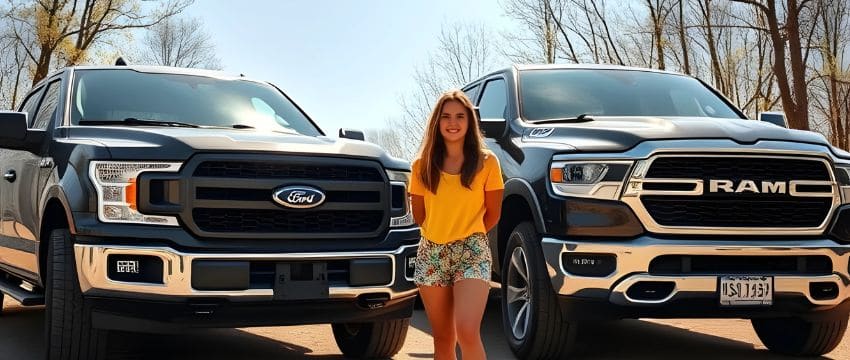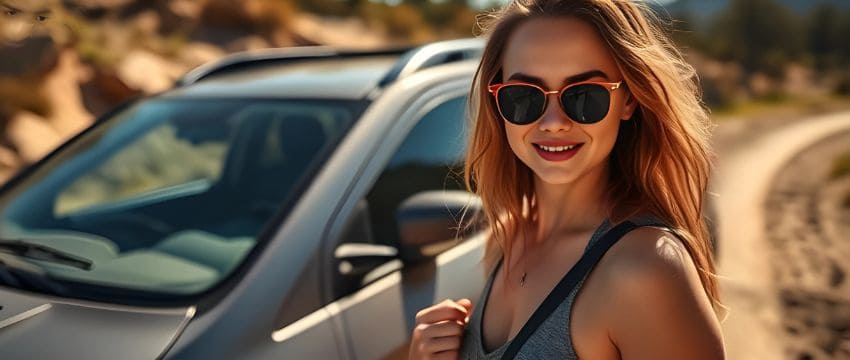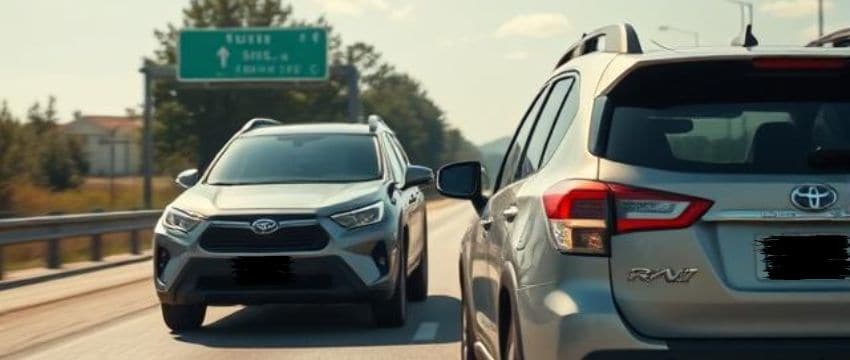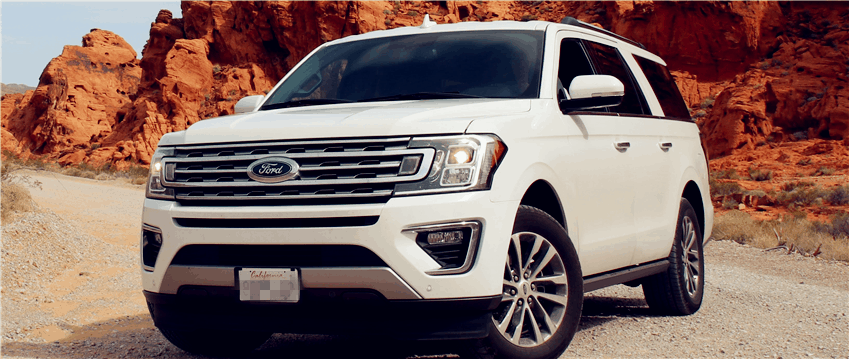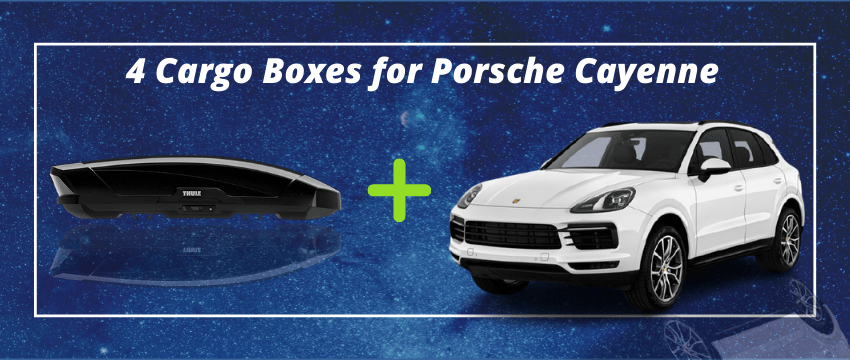Hey there, future trail boss or weekend warrior! So, you’re eyeballing a Toyota Highlander, maybe already own one, and that burning question pops up: “Can this thing actually haul my stuff?” Totally get it. Whether you’re dreaming about pulling a camper for epic family trips, lugging a boat to the lake, or just need to move a heavy trailer occasionally, knowing your Highlander’s true towing muscle is absolutely crucial. Getting it wrong? Yeah, that sucks – big time. It can mean unnecessary strain on your SUV, potential safety hazards, or just plain embarrassment at the campground. No way you want that, right? This guide cuts through the confusion, giving you the real deal on Toyota Highlander towing capacity year by year. We’ll break down the key changes, explain why capacities shifted, and give you the practical know-how to tow confidently and safely. Hang tight, we’re diving deep!
Understanding the Highlander’s Towing DNA (It’s Not Just the Engine!)
How’s it going? Before we jump into the year-by-year specs, let’s get one thing straight: towing capacity isn’t just some random number Toyota plucked out of thin air. Seriously, it’s the result of a whole bunch of engineering factors working together. Think about it: the engine provides the grunt, obviously. A brawnier V6 is gonna pull harder than a thrifty four-cylinder, no surprise there. But hold up, that’s only part of the story! The transmission has to handle the extra load without overheating or wearing out prematurely – nobody wants a fried gearbox mid-trip, for real? Then there’s the suspension.
Towing adds significant weight behind your rear axle, which can make the back end sag and the front end feel light and squirrelly. A robust suspension system counters this, keeping you stable and in control. Brakes are huge – pun intended. Stopping that extra mass requires serious braking power; your standard brakes might not cut it for heavier loads. Finally, the frame itself needs to be rigid enough to handle the twisting forces (torque) applied when you accelerate, brake, or turn with a trailer hooked up.
See the pattern? It’s a team effort under there. Forgetting any one of these players drastically impacts what your Highlander can safely manage. So, when we talk about that official towing capacity number, remember it’s the weakest link in this chain that sets the limit. Make sense?
Quick-Pick List of Towing Accessories For Toyota Highlander:
Image | Items | Links |
|---|---|---|
 | CURT 13200 Class 3 Hitch: This beastly Class 3 hitch bolts onto your Highlander giving you a 2-inch receiver ready to haul up to 6,000 lbs (trailer weight) and handle 900 lbs pushing down on the tongue, plus it gets Toyota’s rust-fighting dual-coat finish for long life. | |
 | CURT 13453 Class 3 Hitch: Another solid Class 3 option for your Highlander featuring a 2-inch receiver, but this one caps your safe pulling power at 5,000 lbs (trailer weight) with a max tongue weight of 500 lbs, and it also boasts that durable rust-resistant CURT coating. | |
 | Rhino USA Shackle Hitch Receiver: Pop this rugged alloy steel shackle into your Highlander’s 2-inch receiver in seconds to safely connect a recovery strap (not for regular towing!), giving you a massive 15+ ton break strength point instead of using a risky hitch ball. | |
 | Draw-Tite 76439 Class 4 Hitch: Step up to serious towing muscle with this burly Class 4 hitch made for specific Highlander/Lexus models (watch the exhaust!), featuring a 2-inch receiver rated for 6,000 lbs trailer weight, 900 lbs tongue weight, and built tough with all-welded steel. | |
 | MECMO 4-Pin Wiring Harness: Get your Highlander’s trailer lights working hassle-free with this plug-and-play 4-pin flat wiring harness – it connects right behind your cargo area and includes a dust cover to keep things clean and corrosion-free. | |
 | Genuine Toyota Hitch Cover: Keep your empty Highlander’s 2-inch receiver tube looking sharp and protected from gunk with this official metal-alloy Toyota cover, fitting perfectly and giving it a clean, finished look. |
The Early Years: Setting the Foundation (2001-2007 Models)
Long time no see for these first-gen Highlanders! If you’re rocking one of these originals or considering a used gem, knowing their capabilities is key. Toyota launched the Highlander in 2001 as a car-based SUV alternative to truck-based beasts, focusing more on comfort and fuel efficiency. Off the top of my head, the standard engine was a 2.4-liter four-cylinder putting out around 155 horsepower.
Honestly? That’s not a lot for serious towing. Toyota officially rated these four-cylinder models for a modest 1,500 pounds. Think small utility trailers, jet skis, or lightweight pop-up campers – basically, nothing too ambitious. Bummer, right? But hold on, there was another option! For folks needing more oomph, Toyota offered a 3.0-liter V6 engine starting in the first model year. This bumped power up to roughly 220 horsepower and, more importantly for towing, delivered significantly more torque. Equipped with this V6, the first-generation Highlander (2001-2007) earned a maximum towing capacity of 3,500 pounds.
That’s awesome! Suddenly, larger pop-ups, smaller travel trailers, decent-sized boats, and more substantial utility trailers became realistic possibilities. Crucially, hitting that 3,500-pound mark absolutely required the V6 engine. No way around it. Also, using a proper weight-distributing hitch was often recommended, especially as you approached that max limit, to help manage stability.
The Power Boost Generation (2008-2013 Models)
What’s new? A major power upgrade, that’s what! The second generation Highlander hit the scene for the 2008 model year, bringing significant changes under the hood. Gone was the older 3.0L V6, replaced by a much more muscular 3.5-liter V6 engine. Dude, this was a game-changer! Horsepower jumped to a much healthier 270 horsepower, and torque saw a substantial increase – exactly what you want for pulling power.
Naturally, this translated directly into a higher towing rating. For the V6-equipped 2008-2013 Highlanders, the maximum towing capacity climbed to a solid 5,000 pounds. That’s legit! This opened up a whole new world: larger travel trailers (think around 20-25 feet), bigger boats, and heavier cargo trailers were now firmly within reach for Highlander owners. But here’s the catch: This 5,000-pound rating wasn’t automatic for every V6 Highlander. Seriously, pay attention. To achieve this max capacity, your Highlander needed the factory-installed towing package.
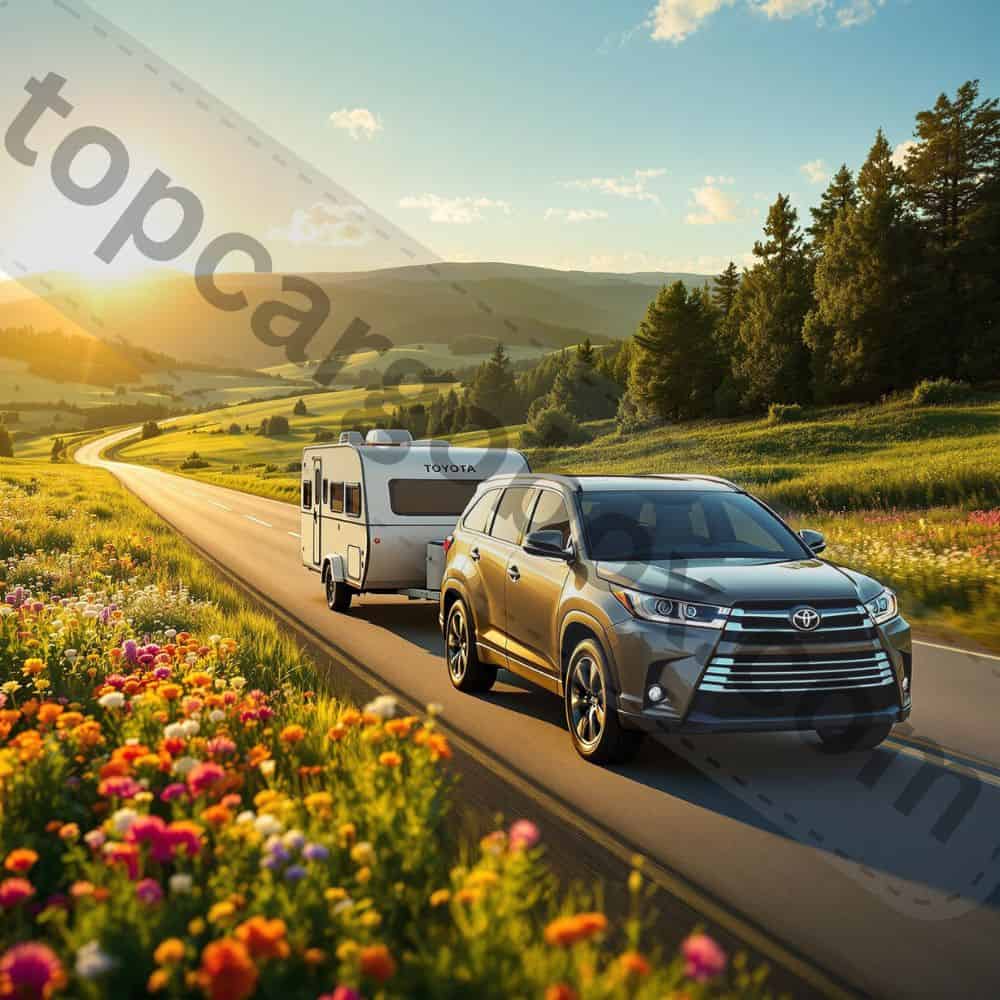
What did this package typically include? Think a heavy-duty radiator to manage extra engine heat, a transmission oil cooler (critical for preventing transmission fluid from overheating under load), and upgraded wiring for trailer lights and brakes. Without this package, the towing capacity dropped significantly, usually down to 3,500 pounds. Don’t get caught out! Always check if the tow package is present. The base four-cylinder engine (now a 2.7L making about 187 horsepower) remained an option during these years, but its towing capacity stayed much lower, officially rated at just 1,500 pounds. Totally fine for light loads, but forget the big camper dreams with this engine.
Refinement and Consistency (2014-2019 Models)
How’s it going, mid-gen? The third-generation Highlander arrived for 2014 with a bolder look, a nicer interior, and more tech. Good news for tower-folk: the powertrain story remained largely consistent and strong. The trusty 3.5-liter V6 carried over, receiving incremental power bumps over the years – landing around 295 horsepower by 2017. Awesome! Crucially, the maximum towing capacity for V6 models equipped with the necessary factory towing package stayed rock solid at 5,000 pounds throughout this entire generation (2014-2019). Consistency is key, right?
Knowing you have that reliable 5,000-pound ceiling across these model years makes shopping used models a bit less stressful. Exactly the same rules applied: the 5,000-pound max required the V6 and the factory tow prep package (radiator, transmission cooler, wiring). Skip the package? Yep, you were likely looking at that reduced 3,500-pound rating again. No big deal if you only need light towing, but a potential headache if you max out unknowingly. Toyota also introduced the Highlander Hybrid more prominently in this generation. Hold up though, the hybrid system, while fantastic for fuel economy around town, wasn’t designed with max towing in mind during these years.
The official towing capacity for the 2014-2019 Highlander Hybrid was a modest 1,500 pounds. That’s crazy! Why the big drop? The hybrid powertrain’s characteristics and cooling systems were prioritized for efficiency over sustained heavy pulling. So, definitely stick to the V6 if serious towing is on your agenda for these models. Need extra gear space beyond your trailer? Hit me up with a roof box solution – super handy for family trips!
The Modern Era: Hybrids Step Up & Tech Evolves (2020-Present Models)
What’s up, current gen? The fourth-generation Highlander debuted for the 2020 model year, bringing sharper styling, even more tech, and significant powertrain changes. Biggest shakeup? The traditional V6 remained, now producing a strong 295 horsepower, and continued to offer a 5,000-pound maximum towing capacity – but only when equipped with the mandatory factory tow package. Same as always, right? Crucially, the V6 became the only gas engine option; the four-cylinder was dropped for the US market.
However, the real headline for this generation was the dramatic improvement in the Highlander Hybrid’s towing ability. Toyota completely redesigned the hybrid system. The new setup utilized a larger 2.5-liter four-cylinder engine combined with more powerful electric motors, resulting in a total system output rivaling the V6. Even better? They engineered the cooling systems and power delivery specifically to handle towing. The result? The 2020 and newer Toyota Highlander Hybrid boasts a very respectable maximum towing capacity of 3,500 pounds when properly equipped with the factory tow package.
That’s lit! This is a massive leap from the previous hybrid’s 1,500-pound limit and makes the hybrid a genuinely viable option for many tower’s needs, offering great fuel economy when not towing. Absolutely a game-changer for eco-conscious families who still need capability. Remember, whether V6 or Hybrid, hitting those max numbers (5,000 lbs for V6, 3,500 lbs for Hybrid) requires the specific factory tow package. Looking for the best years balancing towing and modern features? Check out this breakdown.
Beyond the Brochure: Real-World Towing Tips for Your Highlander
Okay, awesome, you know your Highlander’s official number. But here’s the million-dollar question: How do you translate that brochure figure into safe, stress-free towing adventures? Let’s bounce past the marketing speak and get practical. First off, that max capacity (5,000 lbs or 3,500 lbs) is the absolute upper limit under ideal conditions.
In the real world, you’ll always want to leave yourself a safety margin. Aim to keep your loaded trailer weight comfortably below the max – think 10-15% less. Why? Imagine steep mountain grades on a hot summer day, sudden crosswinds, or needing to brake hard. That buffer is your friend. Next up: Tongue Weight. Ever tried pushing a wheelbarrow with a heavy load too far forward? It sucks, the handles lift, and you lose control. Same principle with a trailer. Too much weight on the hitch (exceeding the tongue weight limit, usually 10-15% of the trailer weight) makes your Highlander’s rear sag and front end light, seriously hurting steering and braking.
No worries, a good scale at a truck stop or CAT scale can help you measure your actual loaded trailer weight and tongue weight. Super important. Also, don’t forget the weight inside your Highlander itself! All passengers, cargo, that roof box full of gear, even the family dog – it all counts towards your vehicle’s Gross Vehicle Weight Rating (GVWR). Exceed that, and you’re overloading the suspension and brakes regardless of the trailer. My bad if that sounds like a lot, but getting the weights right is fundamental.
Need bikes too? A solid bike rack setup keeps them secure without cluttering the interior. Finally, invest in the right gear. A weight-distributing hitch system is highly recommended, especially as you approach 75% of your max capacity. It spreads the trailer load more evenly across all your Highlander’s axles, reducing sag and improving control. Seriously, it makes a world of difference. Electric trailer brakes are essential for trailers over about 1,500 lbs – your Highlander’s brakes alone aren’t enough. Pair it with a quality brake controller installed in your cabin. Take it easy on your first trips, get a feel for how everything handles, and always double-check your connections!
Toyota Highlander Towing Capacity Summary Table
Here’s a quick-reference breakdown of the key specs we’ve covered:
Highlander Generation | Model Years | Engine Type | Max Towing Capacity (With Required Package) | Key Notes |
|---|---|---|---|---|
First Generation | 2001-2007 | 2.4L 4-Cylinder | 1,500 lbs | Base engine, limited capability |
3.0L V6 | 3,500 lbs | Requires V6 engine | ||
Second Generation | 2008-2013 | 2.7L 4-Cylinder | 1,500 lbs | Base engine option |
3.5L V6 | 5,000 lbs | Requires Factory Tow Package (Drops to 3,500 lbs without) | ||
Third Generation | 2014-2019 | 3.5L V6 | 5,000 lbs | Requires Factory Tow Package (Drops to 3,500 lbs without) |
Hybrid (3.5L V6 Based) | 1,500 lbs | Prioritized efficiency over towing | ||
Fourth Generation | 2020-Present | 3.5L V6 | 5,000 lbs | Requires Factory Tow Package, V6 only gas option |
Hybrid (2.5L 4-Cyl Based) | 3,500 lbs | Requires Factory Tow Package, Major improvement over previous hybrid |
Why Knowing Your Exact Year and Specs Matters So Much
Let’s be real: Assuming all Highlanders can tow 5,000 pounds is a huge mistake. How many times do I have to tell you? We’ve seen massive swings: 1,500 lbs for base four-cylinders and early hybrids, 3,500 lbs for first-gen V6s and the new hybrids, and 5,000 lbs only for properly equipped V6 models from 2008 onwards. For real? Buying a 2012 Highlander Hybrid thinking it’ll pull your 3,000-pound camper? That’s crazy! You’d be 1,500 pounds over its limit before you even packed a toothbrush!
Total bummer, and potentially dangerous. Same deal if you snag a 2007 V6 – 3,500 lbs is its ceiling. Don’t rely on the salesman saying, “Yeah, it should handle it,” or your buddy claiming his cousin towed a house with one. Get the hard facts for your specific vehicle. Where? Check the owner’s manual – it’s the ultimate authority. No luck finding the physical manual? No biggie, Toyota often has digital copies online.
Look for a factory tow hitch and wiring connector underneath; while not a guarantee the full package is present (coolers are internal), it’s a good sign. The VIN can often be decoded by a dealer to confirm original equipment. Taking it easy upfront saves you massive headaches (and repair bills!) down the road. Curious how these numbers hold up in real-world use? Real owners share their experiences here.
You’ve Got the Specs – Now Let’s Talk Safe Towing Practices
Alright, so you’re dialed on your Highlander’s capacity and you’ve loaded up correctly. Feeling good? Awesome! But hold your horses – safe towing is an active skill. First up: Driving Dynamics. Towing changes everything. Acceleration is slower – duh, right? But braking distances increase dramatically, even with trailer brakes. Seriously, start braking much earlier than you think you need to. Turning requires more space; wide swings are your friend to avoid clipping curbs.
Crosswinds and passing large trucks will push you around – firm, small steering inputs are better than big jerks. Take it easy on the gas and brakes, smooth is fast and safe. Next: Speed. Forget cruising at 75 mph. Higher speeds magnify sway, increase stopping distances exponentially, and put massive strain on your drivetrain. Stick to lower speeds, especially when starting out. Seriously, your transmission will thank you. Crucially: Maintenance. Towing is hard work. Before any significant tow trip, get your Highlander checked.
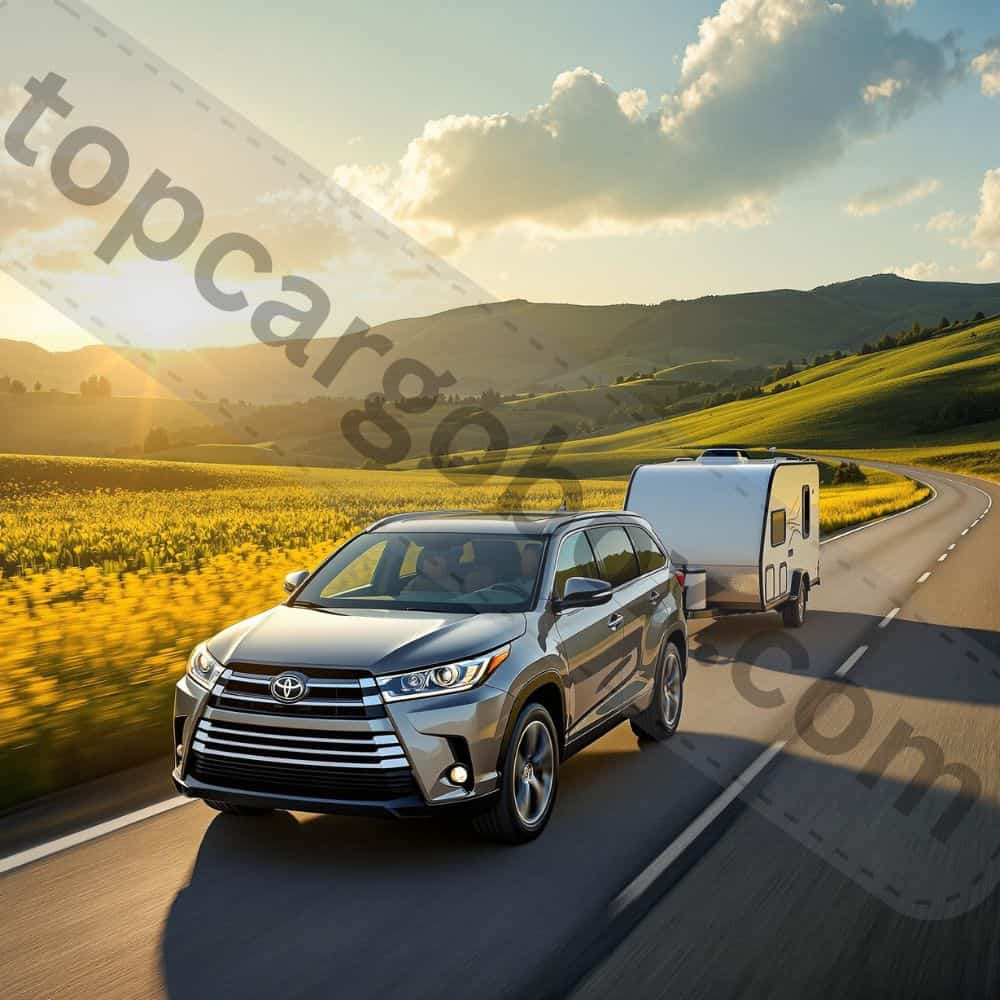
Focus on brakes (pads, rotors, fluid), tires (pressure and condition – both SUV and trailer!), engine coolant, transmission fluid (level and condition – overheating is a killer), and ensure all lights work. Regular oil changes are even more critical when towing frequently. Finally, Practice! Don’t make your maiden voyage a cross-country trek with a brand-new 25-foot trailer. Hit me up at a large, empty parking lot first. Practice straight-line backing, turning, stopping, and getting a feel for the trailer’s behavior. Confidence behind the wheel is built through experience. Fair enough?
Finding the Perfect Highlander for Your Towing Needs
So, how’s the search going? Armed with all this year-by-year knowledge, you’re totally ready to find the Highlander that matches your hauling dreams. Ask yourself: What’s the heaviest thing you realistically plan to tow regularly? Be honest. If it’s under 3,500 pounds, you’ve got tons of options: any V6 Highlander from 2001 onwards, or even the newer 2020+ Hybrids.
That’s awesome flexibility! Need that full 5,000-pound capability? Then focus your search on V6 models from 2008 onwards, and make absolutely sure it has the factory tow package. Don’t compromise on this if you need the max. Check for the physical hitch, wiring connector, and ideally, look for documentation or get a dealer VIN check to confirm the cooler/radiator upgrades.
Considering a Hybrid for the amazing fuel economy? Stick strictly to the 2020 and newer models if you need to tow more than 1,500 pounds. Their 3,500-pound capacity is a massive step up. Feeling under the weather about the used car hunt? No worries, focusing on the best overall years can help narrow it down – this guide is super helpful. Remember, the right Highlander is out there, ready to be your trusty tow partner for countless adventures. You good?
What if You Need More Than 5,000 Pounds?
Okay, let’s say you’ve crunched the numbers, and your dream camper or boat sits firmly above that 5,000-pound Highlander limit. Bummer, right? Is it a long shot? Absolutely. Pushing a Highlander beyond its rated capacity is never recommended. It stresses every critical system – engine, transmission, brakes, frame, suspension – leading to premature wear, potential breakdowns, and serious safety risks like losing control or brake failure.
Not worth it. So, what now? Time to look at Toyota’s more heavy-duty offerings. The Toyota 4Runner, while old school in design, is body-on-frame and boasts a 5,000-pound capacity similar to the Highlander V6, but often handles the load with a bit more ruggedness. The Toyota Sequoia is Toyota’s full-size SUV beast, consistently offering 7,000 pounds or more of towing muscle across generations – legit power for larger trailers. And then there’s the king, the Toyota Tundra pickup truck.
Even the base models typically start around 8,000 to 10,000 pounds, with max configurations reaching well over 12,000 pounds. Dude, that’s serious towing territory! So, yeah, if 5,000 pounds isn’t enough, it’s wise to step up to a platform engineered for the extra punishment. Totally changes the game. Need cargo space on your SUV for a bigger rig? Roof boxes for larger Toyotas or Siennas can help maximize storage.
Conclusion: Tow Smart, Tow Safe with Your Highlander
Phew! We covered a lot of ground, right? From the humble 1,500-pound beginnings of the first-gen four-cylinder, through the 3,500-pound capability of the early V6s, up to the robust 5,000-pound standard set by the 2008+ V6s (with the right package!), and finally, the impressive 3,500-pound leap of the modern Hybrids. Knowing your specific Highlander’s year, engine, and equipment package is everything when it comes to understanding its true towing potential.
Please, I’m really grateful if you take one thing away: Respect those limits. They exist for your safety, your passengers’ safety, everyone else on the road, and the longevity of your trusty Highlander. Get a kick out of the process – weigh your loads, invest in the right hitch and brake controller, maintain your SUV diligently, and practice your skills. Do that, and your Toyota Highlander will be a fantastic partner for hauling your toys, tools, or tiny home away from home for years to come. Happy and safe towing! Catch you later on the open road!
Your Burning Highlander Towing Questions, Answered!
Can my Toyota Highlander actually handle 5,000 lbs?
You bet it can, but only if you’ve got the right setup! Don’t get excited if yours has the tiny four-banger or that older 3.0L V6 – you need the 3.5-liter V6 from 2008 or later. And here’s the kicker: it must have the factory tow package installed. No package? That sucks, because you’re suddenly capped at just 3,500 pounds – a major letdown if you planned for bigger loads. That package isn’t just a hitch; it’s the heavy-duty radiator, transmission cooler, and beefed-up wiring that make 5,000 pounds legit and safe. Load smart, drive smooth, and yeah – it’ll get the job done.
Which Highlander year packs the most towing muscle?
Hands down, it’s the gasoline V6 models rocking the factory tow package. We’re talking 2008 through today’s 2025 models – doesn’t matter if it’s second-gen (2008-2013), third-gen (2014-2019), or the latest fourth-gen. All of ’em max out at a solid 5,000 pounds when properly equipped. Nice try, hybrids – even the newer ones tapping out at 3,500 pounds can’t match that raw V6 grunt. Want the undisputed champ? Target any V6 with that factory tow package sticker.
What Toyota SUV yanks 7,000 pounds or more?
Time to level up, friend. The Highlander’s family-friendly frame hits its ceiling at 5,000 pounds. If you’re eyeing 7,000+ pounds, the Toyota Sequoia is your main SUV play – this full-size beast consistently pulls at least 7,000 pounds, sometimes hitting 7,400+ depending on trim. The rugged 4Runner? Nope, it’s stuck at 5,000 pounds too. For serious business like big boats or heavy equipment trailers, the Toyota Tundra pickup is your powerhouse, starting around 8,000-10,000 pounds. Body-on-frame matters when you need real brawn.
How much can a 2012 Highlander really pull?
Totally depends on what’s under the hood! Got the base 2.7-liter four-cylinder? Sorry, you’re stuck at 1,500 pounds – jet skis or small utility trailers only. Spring for the 3.5L V6? Now we’re talking… but only if it left the factory with the tow package. No package? Maxes out at 3,500 pounds. With it? You unlock the full 5,000-pound potential. Never assume – peek under the rear for the hitch and wiring, or decode the VIN. Dealers love to gloss over this detail.
What’s the 2011 Highlander’s towing limit?
Same exact rules as the 2012! That little 2.7L four-cylinder taps out fast at just 1,500 pounds. Upgrade to the 3.5L V6, and your fate hinges on one thing: the factory tow package. Find it? Congrats, 5,000 pounds is yours. Miss it? You’re downgraded to 3,500 pounds. That package isn’t optional – it’s the radiator and transmission cooler upgrades that make heavy towing sustainable. Don’t risk frying your transmission trying to pull more!
What’s the deal with the 2016 Highlander’s towing?
Solid third-gen ride! If yours has the 3.5L V6 gas engine plus the factory tow package, you’re golden at 5,000 pounds. Skip the package? You’re back to 3,500 pounds – feels like a bait-and-switch, right? Now, if you went hybrid… oof. That older V6 hybrid system? Maxes out at a measly 1,500 pounds. Not even close to enough for a decent camper. Always double-check the engine badge and look for that tow package sticker. Hybrid-curious? Real-world hybrid towing stories might save you regret.
Our team is creating outdoor-gear relevant articles with passion. If our articles can help you to find the correct solutions for your questions, we will be happy about that. In the content creation process, we usually collect accurate and useful information online or offline to compile our content in an organized way. Consequently, we can guarantee that you can discover some expected answers to your questions. We appreciate your time on our site.

